An epicurean adventure to: South Africa
Here's a delicious, foolproof 'Pannekoek' recipe straight from the kitchen of my late and great granny Julia. This precious heirloom must have churned out gazillions of cinnamon sugar pancakes by now. And it's still going strong!
It's your quintessential 'church bazaar' pancake batter, designed for the quick and effortless production of soft (never tough!) pancakes that gracefully flip without tearing or sticking. It uses simple, cost-effective ingredients - no milk or butter needed.
This South African pancake recipe, in my somewhat shamelessly biased opinion, deserves a spot in every pancake lover's arsenal.

Jump to:

What's to love about this recipe
- When baked correctly, these pancakes do not stick and do not tear when flipping, thanks to the addition of oil.
- This is a classic South African, easy pancake recipe, ideal for effortlessly mass-producing pancakes or if you simply crave that familiar farmer's market pancake at home.
- Although cinnamon sugar is traditional, these pancakes work wonderfully with a myriad of sweet and savoury fillings.
- It's a no-butter and no-milk pancake recipe, making it economical and convenient with just a handful of pantry staples needed.
- Easy to half or double the recipe and you can make the batter a day in advance. Whisk the baking powder in just before you bake.
South African pancakes, also known as 'Pannekoek' from the Dutch origin of 'Pannenkoek,' are a thin pancake recipe, akin to a French crepe, but slightly thicker and nothing like the plumper, smaller, American pancakes.
The Rainbow Nation particularly enjoys these pancakes on a rainy day (we even call rainy days 'Pancake weather'), at church and school fetes or any outdoor events where food is involved - which, in South Africa, is pretty much all of them.
The pancake batter is baked in a very lightly oiled frying pan for a couple of minutes, sprinkled with cinnamon sugar, rolled up and wrapped in a square of wax paper for easy holding. The cinnamon sugar melts into the hot pancake, and it's just...heaven. Comfort food personified!
I have noticed lemon juice on the pancakes seems to creep into a lot of 'pannekoek' recipes. Just note that this is not a traditional way of eating them for South Africans. However, in the United Kingdom, a dash of fresh lemon juice and sugar are enjoyed on very similar-looking English thin pancakes.
Also see these thin, Danish pancakes with crispy edges.
Key ingredient notes and substitutions
**Please see the recipe card at the bottom of this post for the full list of ingredients and quantities.

Oil
You will need a flavourless oil such as sunflower oil, canola oil or vegetable oil. Any flavoured oils like olive oil will definitely harm the flavour of the pancakes.
The oil in the batter prevents the pancakes from sticking to the pan.
Vinegar
While we prefer white vinegar like white wine vinegar, you can use brown vinegar too.
The vinegar helps produce soft, fluffy pancakes.

Cinnamon sugar
We find the perfect cinnamon-to-sugar ratio is 1:4. If you prefer your pancakes more cinnamony, feel free to adjust the ratio with more cinnamon (or less).
Equipment needed
- A rubber spatula for flipping the pancakes.
- A soup ladle is useful for measuring and pouring the batter into the pan. Alternatively, you can use a large jug to pour the batter straight into the pan.
- A large or medium non-stick pan or a crepe pan.
- If you are making the recipe to its current capacity, you will need a rather large mixing bowl as it yields a significant amount of batter. Or, simply half the recipe for a smaller batch of around 10-12 pancakes.
- An electric hand mixer is very handy but you can use a balloon whisk instead.

Step-by-step guide
Don't forget - The first pancake is a chef's privilege!

- In a large bowl, whisk the eggs and water until the eggs are well broken up and evenly dispersed in the water. An electric hand mixer works well, but you can also use a balloon whisk.

- Add the vinegar and oil to the egg mixture and beat until well combined.

- In a separate bowl, sift the plain flour, baking powder and salt together.

- Sprinkle a third of the dry ingredients onto the wet ingredients and beat until incorporated. Repeat this process twice more with the remaining flour.

- Beat until you have a smooth batter that resembles thick cream. If you notice any pockets or lumps of flour, increase the speed and beat only until they disappear.
- Set the batter aside to rest for 15 minutes.

- Prepare the non-stick frying pan by adding a small amount of oil. Use a piece of kitchen paper to spread the oil around the pan, ensuring only a very thin layer remains. Keep the oiled paper handy in case you need to apply more later.
- Heat the pan over medium-high heat.

- Add a ladle of batter to the hot pan (enough batter to fill the bottom of the pan). As soon as the batter hits the pan, swirl it around to evenly distribute it to the edges. Work quickly before the batter settles.

- Still over medium-high heat, cook the pancake until the surface appears dull (with no shiny patches of batter) and the edges of the pancake start pulling away from the pan.

- Gently slide the spatula underneath the pancake up to the middle and quickly and confidently flip it over. Cook until the underside is light, golden brown with a few darker spots.
- Repeat for the remaining batter, regulating the heat as necessary.
Cooked pancakes can be kept on a plate covered top and bottom with foil. Alternatively, place a plate over a saucepan of simmering water with the pancakes on top to keep warm.

- In a small bowl, combine the cinnamon and sugar, then sprinkle the mixture generously onto each pancake before rolling it up.
More filling ideas
Sweet
- Jam or golden syrup.
- Cooked cinnamon apple with cream or ice cream.
- A drizzle of lemon juice and sugar.
- Berry compote with cream or ice cream.
- Nutella.
- Maple syrup and pecan nuts.
- Strawberries and cream.
- Honey and yoghurt.
- Lemon curd.
Savoury fillings
- Tuna melt (tuna with a touch of mayo and cheese, heat until melted).
- Butter chicken filling (use this filling from this butter chicken pies recipe).
- Smoked salmon and cream cheese.
- Grated cheese.
- Ham and cheese.
- Chicken and pesto.
- Bacon, scrambled eggs and cheese.
- Chicken mayo.
Storage, reheating and freezing
Storage
Once cooked, store leftover pancakes in an airtight container or a zip-top bag in the fridge for up to 2 days.
Reheating
Place pancakes on a microwave-safe plate, cover with a damp paper towel or cling wrap and heat in 20-second intervals until warm.
Freezing
Cooked pancakes can be frozen in layers of 10 and thawed at room temperature.
FAQ
Allowing pancake batter to rest for about 15 minutes is beneficial for several reasons:
During this resting period, the flour in the batter has time to fully absorb the liquid ingredients. This absorption process is essential for the development of gluten, which contributes to the structure and texture of fluffy pancakes.
Additionally, the resting time allows the liquid in the batter to interact with the starches and proteins in the flour, resulting in a smoother and more cohesive batter.
The pancakes made from rested batter tend to be lighter, fluffier and have a more desirable texture compared to those cooked immediately after mixing.
You can definitely cook the pancakes right away and they will turn out fine. However, giving the batter time to rest produces an even better result.
More traditional South African recipes
See all South African recipes.
Recipe

Traditional South African Pancakes Recipe (Pannekoek)
Equipment
- 1 large or medium frying or crepe pan
Ingredients
For the pancakes
- 4 eggs
- 4½ cups (1125ml) water
- ¼ cup (63ml) vinegar - 4 tablespoons and ½ teaspoon.
- 1 cup (250ml) oil - neutral oil like sunflower, vegetable
- 4 cups (600g) all-purpose flour
- 4 teaspoons baking powder
- 1 teaspoon salt
For the cinnamon sugar
- ½ cup (125ml) white sugar
- 2 tablespoons ground cinnamon
Instructions
- In a large bowl, whisk the eggs and water until the eggs are well broken up and evenly dispersed in the water. An electric hand mixer works well, but you can also use a balloon whisk.4 eggs, 4½ cups (1125ml) water
- Add the vinegar and oil to the egg mixture and beat until well combined.¼ cup (63ml) vinegar, 1 cup (250ml) oil
- In a separate bowl, sift the flour, baking powder and salt together.4 cups (600g) all-purpose flour, 4 teaspoons baking powder, 1 teaspoon salt
- Sprinkle a third of the dry ingredients onto the wet ingredients and beat until incorporated. Repeat this process twice more with the remaining flour.
- Beat until you have a smooth batter that resembles thick cream. If you notice any pockets or lumps of flour, increase the speed and beat only until they disappear.
- Set the batter aside to rest for 15 minutes.
- Prepare the non-stick frying pan by adding a small amount of oil. Use a piece of kitchen paper to spread the oil around the pan, ensuring only a very thin layer remains. Keep the oiled paper handy in case you need to apply more later.
- Heat the pan over medium-high heat.
- Add a ladle of batter to the hot pan. As soon as the batter hits the pan, swirl it around to evenly distribute it to the edges. Work quickly before the batter settles.
- Still over medium-high heat, cook the pancake until the surface appears dull (with no shiny patches of batter) and the edges of the pancake start pulling away from the pan.
- Gently slide the spatula underneath the pancake up to the middle and quickly and confidently flip it over. Cook until the underside is light, golden brown with a few darker spots.
- Repeat for the remaining batter, regulating the heat as necessary. Cooked pancakes can be kept on a plate covered top and bottom with foil. Alternatively, place a plate over a saucepan of simmering water with the pancakes on top to keep warm.
- In a small bowl, combine the cinnamon and sugar, then sprinkle the mixture generously onto each pancake before rolling it up.½ cup (125ml) white sugar, 2 tablespoons ground cinnamon
**Nutritional data disclaimer**
Please keep in mind that the nutritional information provided below is calculated by a third party and we cannot guarantee the accuracy. We try our best to give you the most accurate information, but we do not take responsibility for errors that may be present. Also, the nutritional value of the recipe may change depending on the exact brands and products used. We recommend that you consult with a qualified healthcare professional or registered dietitian for personalised advice on your dietary needs.
Nutrition
For food safety advice, including guidance on food allergies

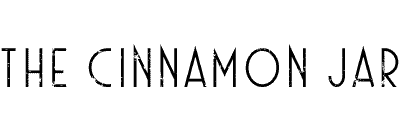
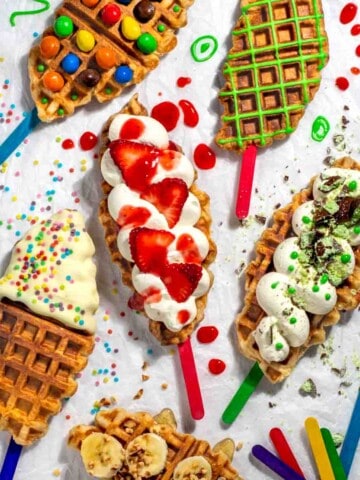
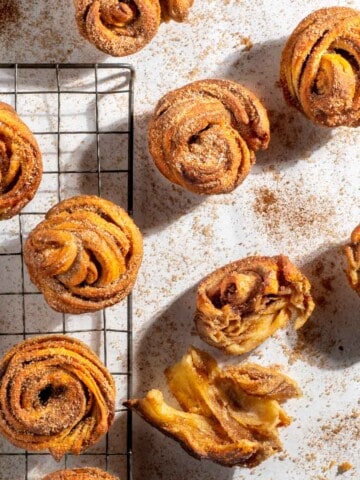
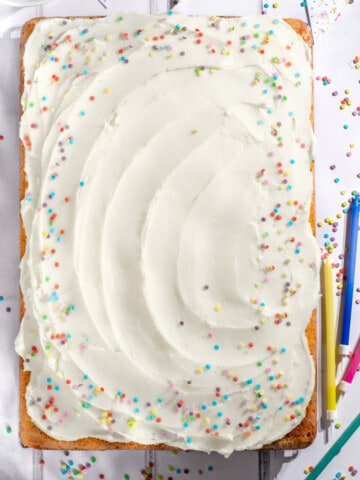
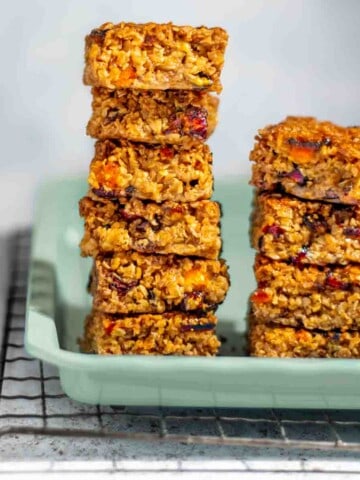
Leave a Reply